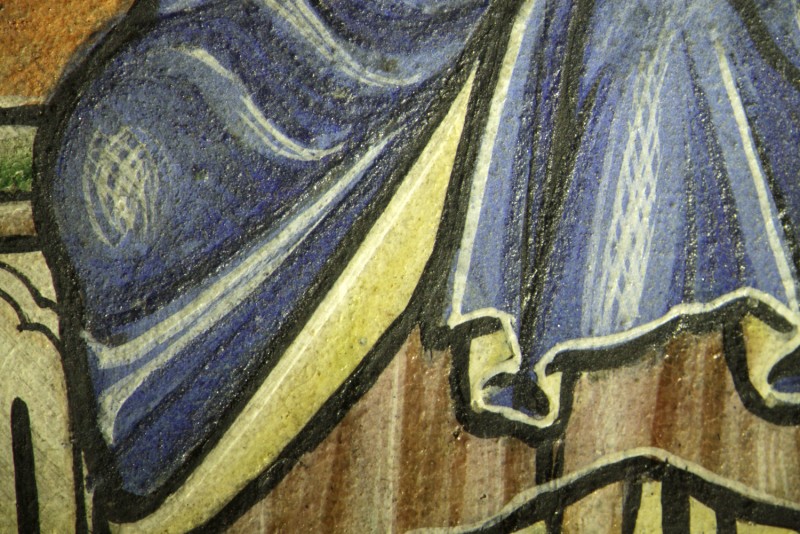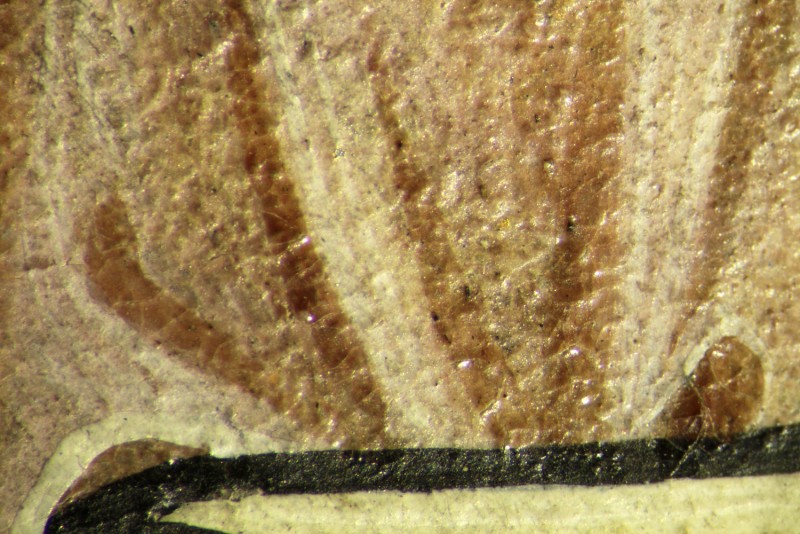Modelling of draperies
Artists' Techniques
The figures in this Psalter reflect the evolution from linear decorative fold patterns to a more naturalistic modelling of draperies. Gradations of colour are used to suggest volume and there is clear awareness of shadows and highlights, even though folds are still defined with thick black outlines, reminiscent of earlier modelling techniques.

_sharpened and cropped.jpg)


Historiated initial D with Christ in Majesty and a peacock (Psalm 109)
The peacock, which forms the curving ascender of the initial D, symbolises the Resurrection and immortality. The use of silver for the peacock is unique within the manuscript. The dark colour bleeding through the parchment, as well as extensive losses indicate that the metal has tarnished (hotspot 1). Silver was applied over an orange layer containing gypsum and ochre. It appears to have been laid over previous paint layers (hotspot 2).
Christ’s mantle is modelled with lead white highlights and cross-hatching over the ultramarine blue base (hotspot 3). A yellow organic glaze is applied over a white base in the inner part of the mantle. The pink tunic is painted with an organic red dye mixed with gypsum and lead white (hotspot 4).